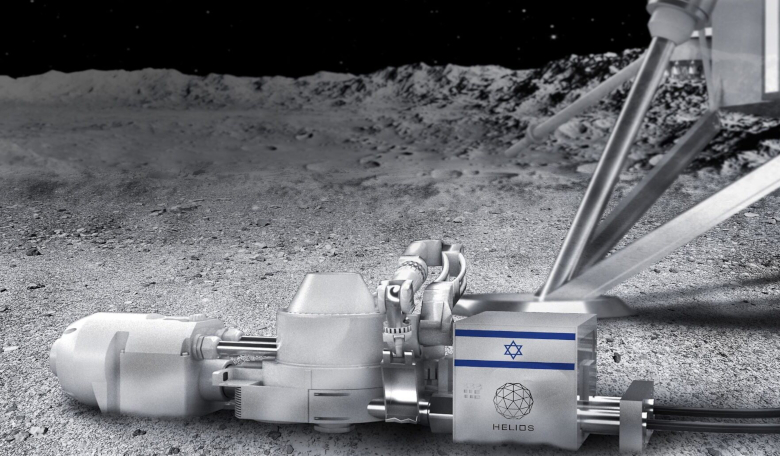The Israeli company Helios has said it plans to join ispace, Japan’s lunar exploration firm, on its second and third missions to the moon to demonstrate in situ extraction of oxygen and metal that can be used as fuel and material for the construction of a future lunar base.
Helios announced the initiative, which has been awarded funding from the Israeli Space Agency, earlier this year, but did not comment on prospective partners at the time.
The company has now revealed its new partnership following the signing of a Memorandum of Understanding (MoU) at a formal ceremony held at the Japanese Embassy in Israel last week.
The signing, which is the first Israeli-Japanese MoU for technological cooperation, was attended by high-ranking officials including Mizushima Koichi, Ambassador of Japan, Mrs. Orit Farkash-Hacohen, Minister of Innovation in Science and Technology, Avi Blasberger, Head of the Israel Space Agency, Jonathan Geifman, CEO of Helios, and Takashi Hakamada, CEO ispace who joined video call from Japan.
It will see ispace, who has also signed an MoU with the United Arab Emirates (UAE) this year, deliver Helios’ Lunar Extractor-1 reactor to the lunar surface onboard ispace’s lander by the end of 2023 and mid 2024.
Lunar Extractor-1 is a reactor that heats lunar soil to 1600 degrees Celsius, then uses electrolysis to separates oxygen once locked up in oxides and minerals from the rest of the surface material.
Oxygen produced from the reactor, that will operate independently from Earth, will be stored as propellant oxidiser, while the metals will be used to establish the infrastructure for future lunar and martian bases, say the firm.
“Our solution is unique as its output yields two highly crucial materials at the same time, and it does not require earth brought consumables,” say Helios.
One of the main obstacles in sending missions to the Moon is the cost of transporting payloads from Earth to the lunar surface. Fees are dependent on the spacecraft and supplier used, but can range anywhere from about $10,000 to $40,000 to put half a kilogram (one pound) of material into orbit.
Being able to successfully extract oxygen in appreciable quantities will drastically reduce the cost of initial establishment, and eventually enable colonists to “live off the land”, Helios say.
"Returning to the moon and establishing a permanent residence on it requires cooperation between countries and companies. In our opinion, returning to the moon will create significant business opportunities in the global space industry and Helios and ISPACE companies are examples of companies that will lead and be a key factor in this trend. The Israel Space Agency works to support and promote Israeli space companies," Avi Blasberger, Director of the Israel Space Agency adds.
To try out its system before deployment to the lunar surface, the company has simulated most of the conditions on the Moon using Moon-like sand developed by the University of Central Florida, based on samples brought back from the Moon.
Helios's first outing to to the Moon will now allow the company to test out its technology on our nearest celestial neighbour, to see how it performs in a reduced gravity environment.











